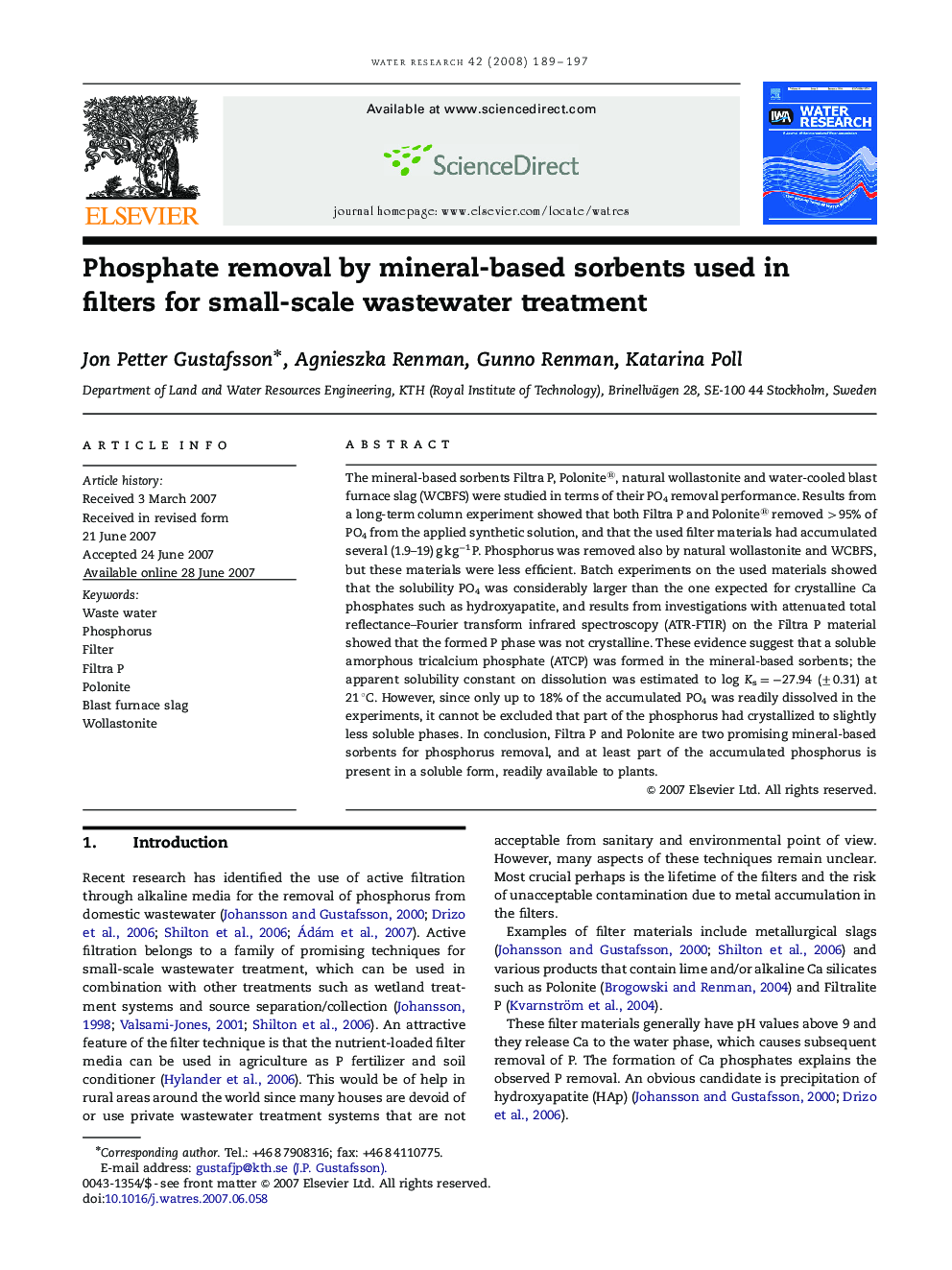| Article ID | Journal | Published Year | Pages | File Type |
|---|---|---|---|---|
| 4485752 | Water Research | 2008 | 9 Pages |
The mineral-based sorbents Filtra P, Polonite®, natural wollastonite and water-cooled blast furnace slag (WCBFS) were studied in terms of their PO4 removal performance. Results from a long-term column experiment showed that both Filtra P and Polonite® removed >95% of PO4 from the applied synthetic solution, and that the used filter materials had accumulated several (1.9–19) g kg−1 P. Phosphorus was removed also by natural wollastonite and WCBFS, but these materials were less efficient. Batch experiments on the used materials showed that the solubility PO4 was considerably larger than the one expected for crystalline Ca phosphates such as hydroxyapatite, and results from investigations with attenuated total reflectance–Fourier transform infrared spectroscopy (ATR-FTIR) on the Filtra P material showed that the formed P phase was not crystalline. These evidence suggest that a soluble amorphous tricalcium phosphate (ATCP) was formed in the mineral-based sorbents; the apparent solubility constant on dissolution was estimated to log Ks=−27.94 (±0.31) at 21 °C. However, since only up to 18% of the accumulated PO4 was readily dissolved in the experiments, it cannot be excluded that part of the phosphorus had crystallized to slightly less soluble phases. In conclusion, Filtra P and Polonite are two promising mineral-based sorbents for phosphorus removal, and at least part of the accumulated phosphorus is present in a soluble form, readily available to plants.
